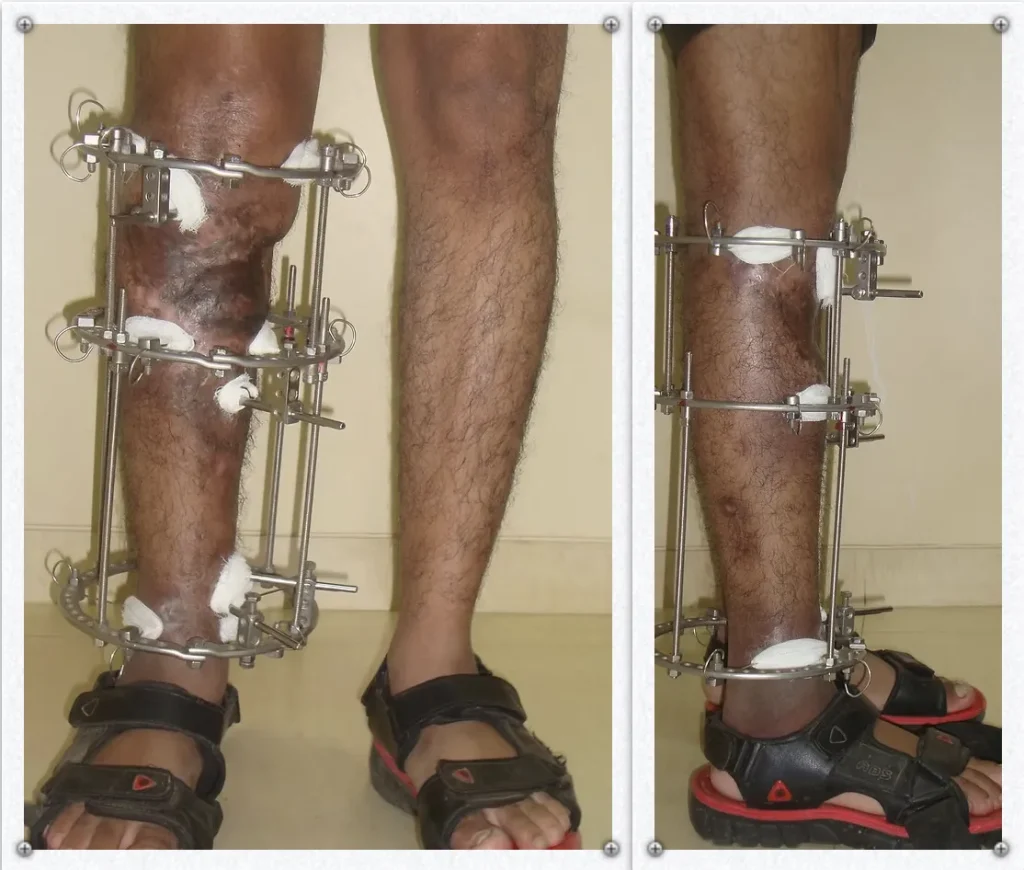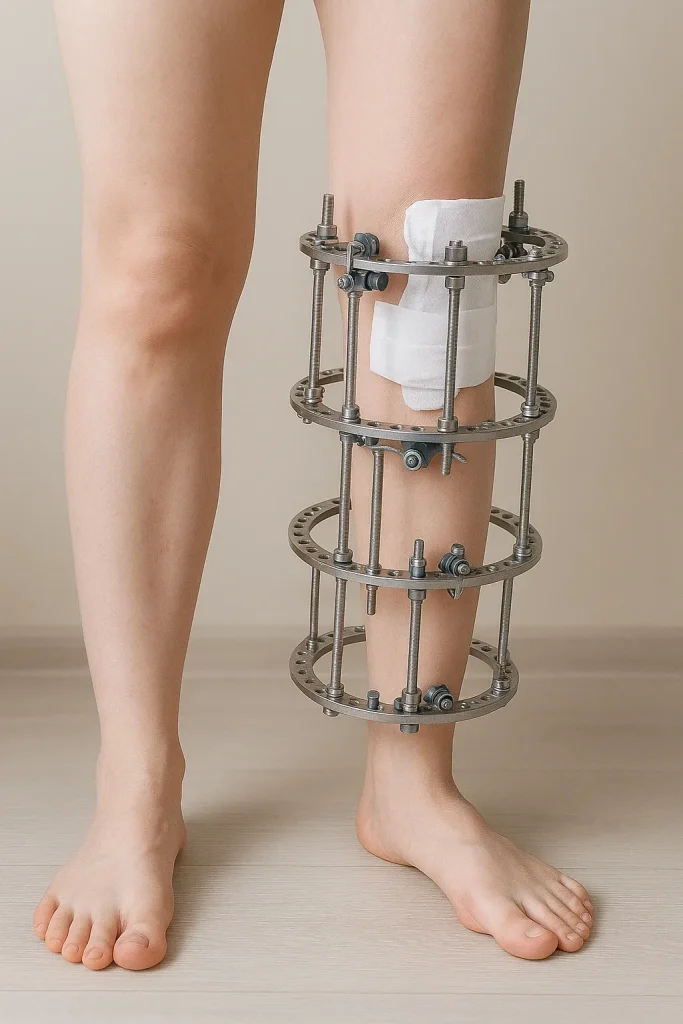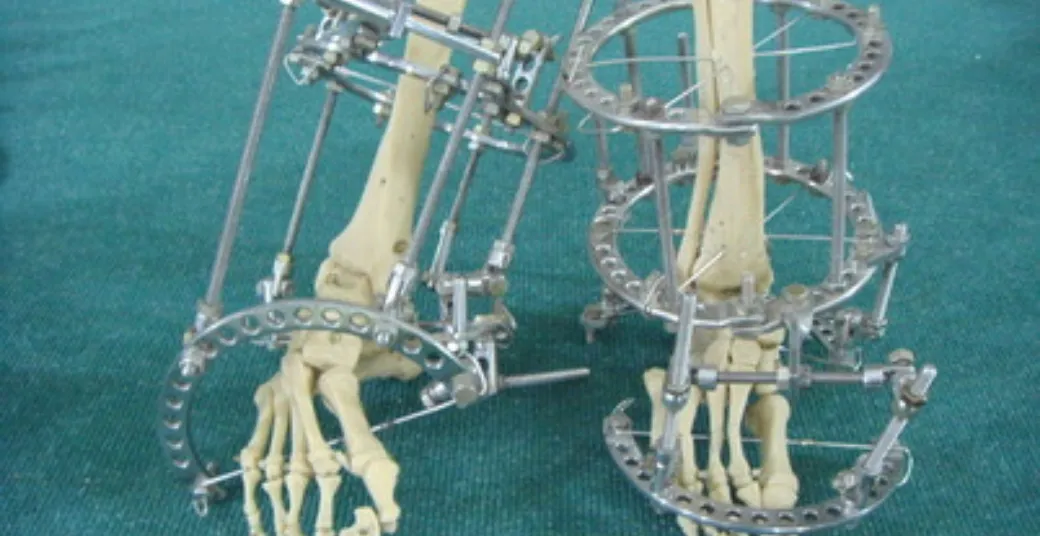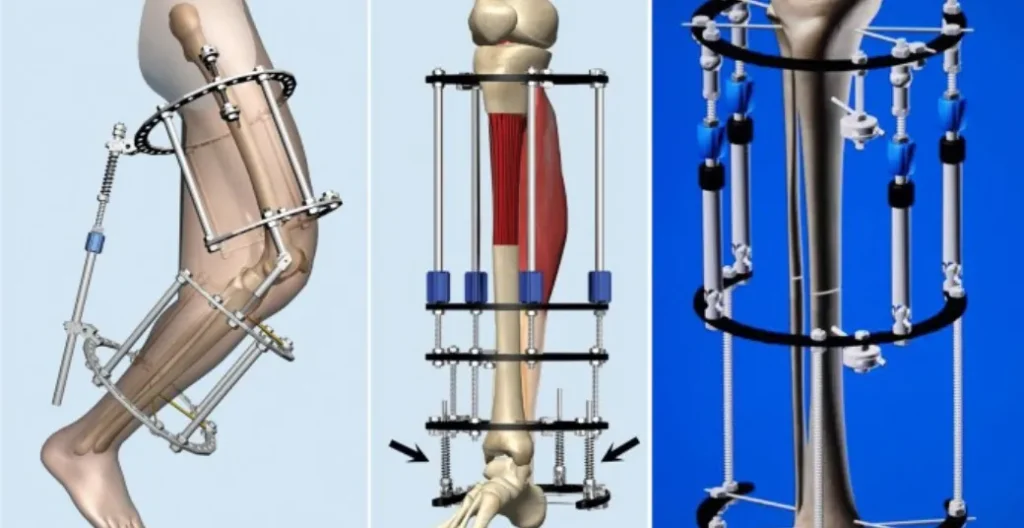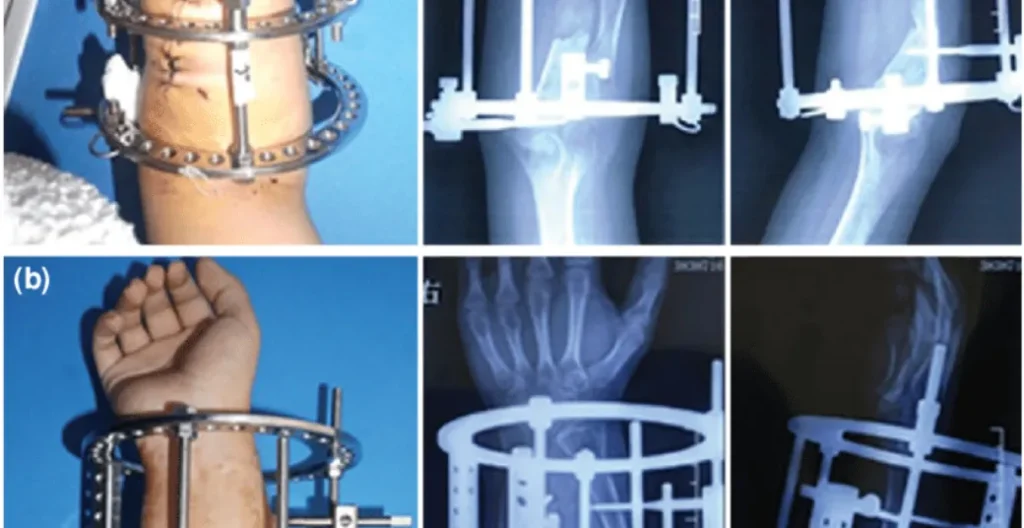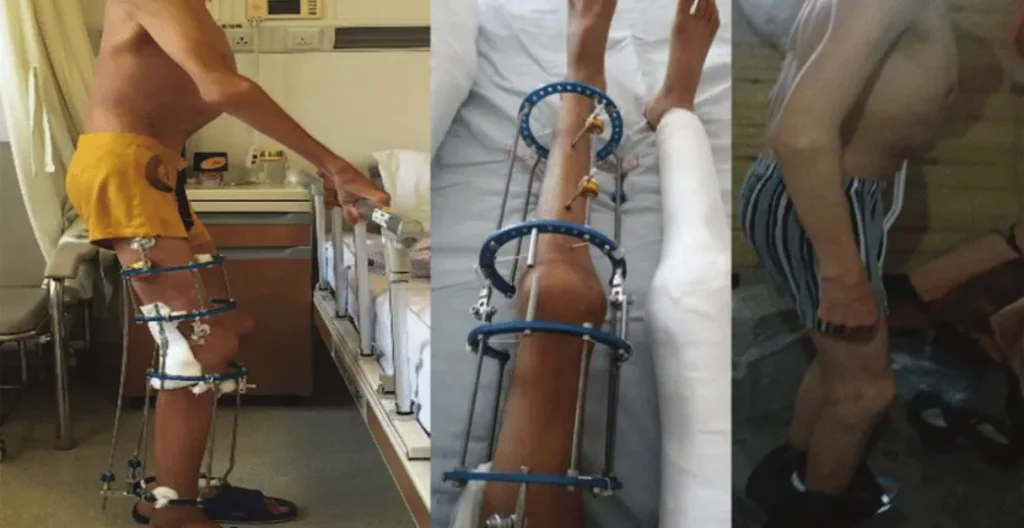How We Work
Frequently Asked Questions abour Ilizarov Surgery
What is Ilizarov surgery?
Ilizarov surgery is an orthopedic procedure that uses an external fixator called the Ilizarov apparatus to lengthen or reshape bones. It is commonly used to treat complex fractures, limb length discrepancies, bone deformities, and non-unions (bones that fail to heal). Developed by Dr. Gavriil Ilizarov, the surgery involves gradually moving bone segments apart to stimulate new bone growth through a process called distraction osteogenesis.
Is Ilizarov surgery safe?
Yes, Ilizarov surgery is generally considered safe and effective when performed by experienced orthopedic surgeons. It is a well-established technique used worldwide, especially for cases where other surgical methods may fail. However, like any surgical procedure, it carries risks such as pin site infections, joint stiffness, and discomfort during the lengthening phase. With proper post-operative care and physical therapy, most complications can be managed successfully.
What is the Ilizarov frame used for?
The Ilizarov frame is used for external fixation of bones to treat various orthopedic conditions. It stabilizes and gradually moves bone segments to correct angular deformities, address limb length discrepancies, and heal complex or infected fractures. The circular frame, consisting of rings, wires, and threaded rods, allows precise control over bone movement and promotes the regeneration of bone and soft tissues.
What is the principle of Ilizarov?
The Ilizarov technique is based on the biological principle of distraction osteogenesis. When bone segments are slowly and carefully pulled apart, the body generates new bone tissue in the gap. This process also stimulates the growth of blood vessels, nerves, and soft tissues, making it effective for correcting deformities and lengthening limbs. The principle relies on gradual, controlled mechanical tension applied using the Ilizarov apparatus.
What is Ilizarov surgery for height?
Ilizarov surgery can be used for cosmetic limb lengthening, including height increase procedures. In such cases, the bone is surgically cut and the Ilizarov device is applied to slowly lengthen the limb, typically the femur or tibia. Over several months, the patient can gain 5–8 cm (2–3 inches) in height. However, it is a lengthy and physically demanding process that requires strong commitment, extensive rehabilitation, and carries higher ethical and psychological considerations.
What are the disadvantages of Ilizarov?
While highly effective, the Ilizarov method has some disadvantages:
Lengthy treatment time (months or even over a year)
Discomfort and pain during the distraction phase
Pin site infections which require regular cleaning
Possible joint stiffness or muscle tightness
Need for regular follow-up and physical therapy
Visible scarring due to pin placements
Despite these, most patients recover well with proper management.
What is the success rate of Ilizarov?
Ilizarov surgery has a high success rate, particularly for limb deformities, bone non-unions, and length discrepancies. Clinical studies report success rates between 85% and 95%, depending on the condition being treated, patient compliance, and the surgeon’s expertise. Success is defined not only by bone healing but also by the restoration of function and improvement in quality of life.
What is the safest limb lengthening procedure?
The safest limb lengthening procedures today include both external fixation methods (like Ilizarov and Taylor Spatial Frame) and internal nail techniques (like Precice). Among these, internal lengthening nails are less visible and more comfortable but are costlier and not suitable for all cases. The Ilizarov method remains one of the safest and most versatile, especially for complex cases, due to its adaptability and proven long-term outcomes.
What is the recovery time for Ilizarov surgery?
Recovery from Ilizarov surgery varies based on the condition treated and the amount of lengthening. Typically, the distraction phase (when bone is being lengthened) lasts 6–12 weeks, followed by a consolidation phase that can take 3–6 months or more. Full recovery, including device removal and rehabilitation, may take up to 12 months. Active physical therapy is essential to maintain joint mobility and muscle strength during recovery.
